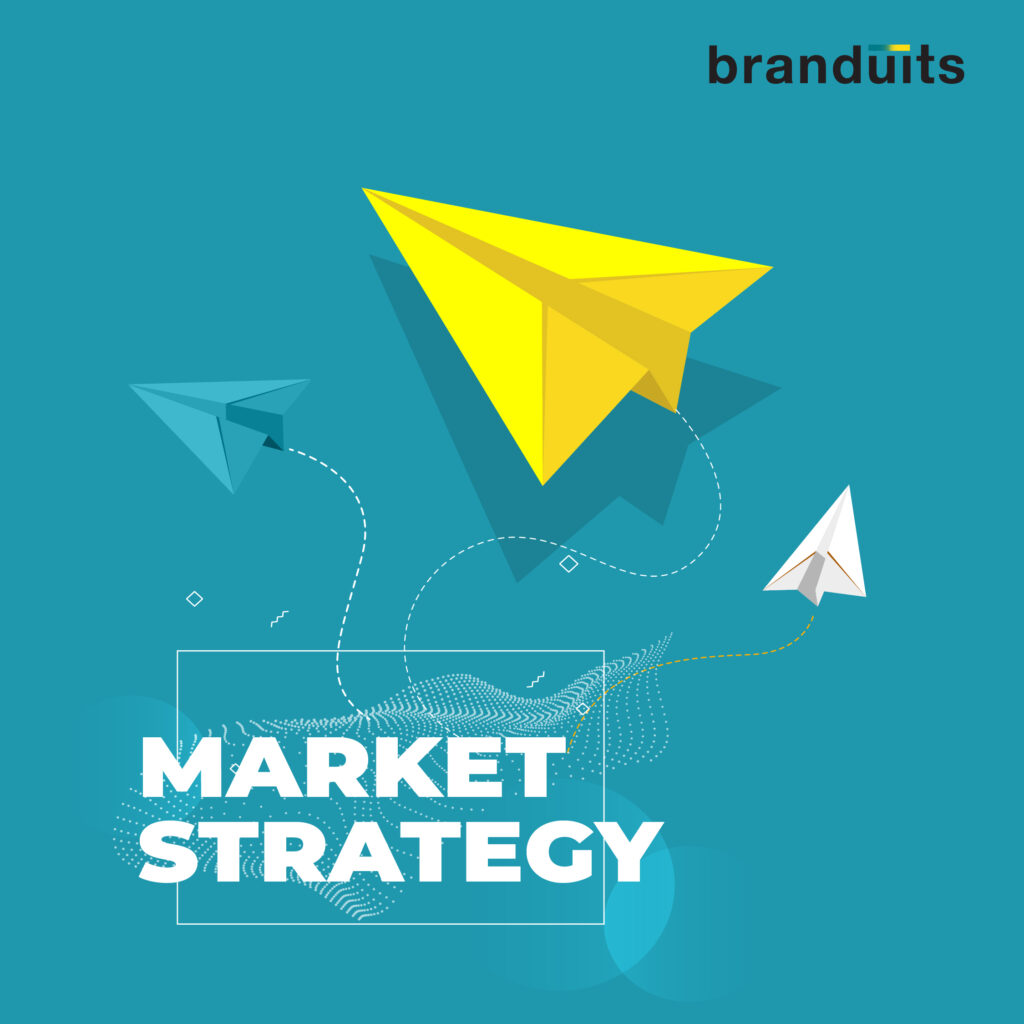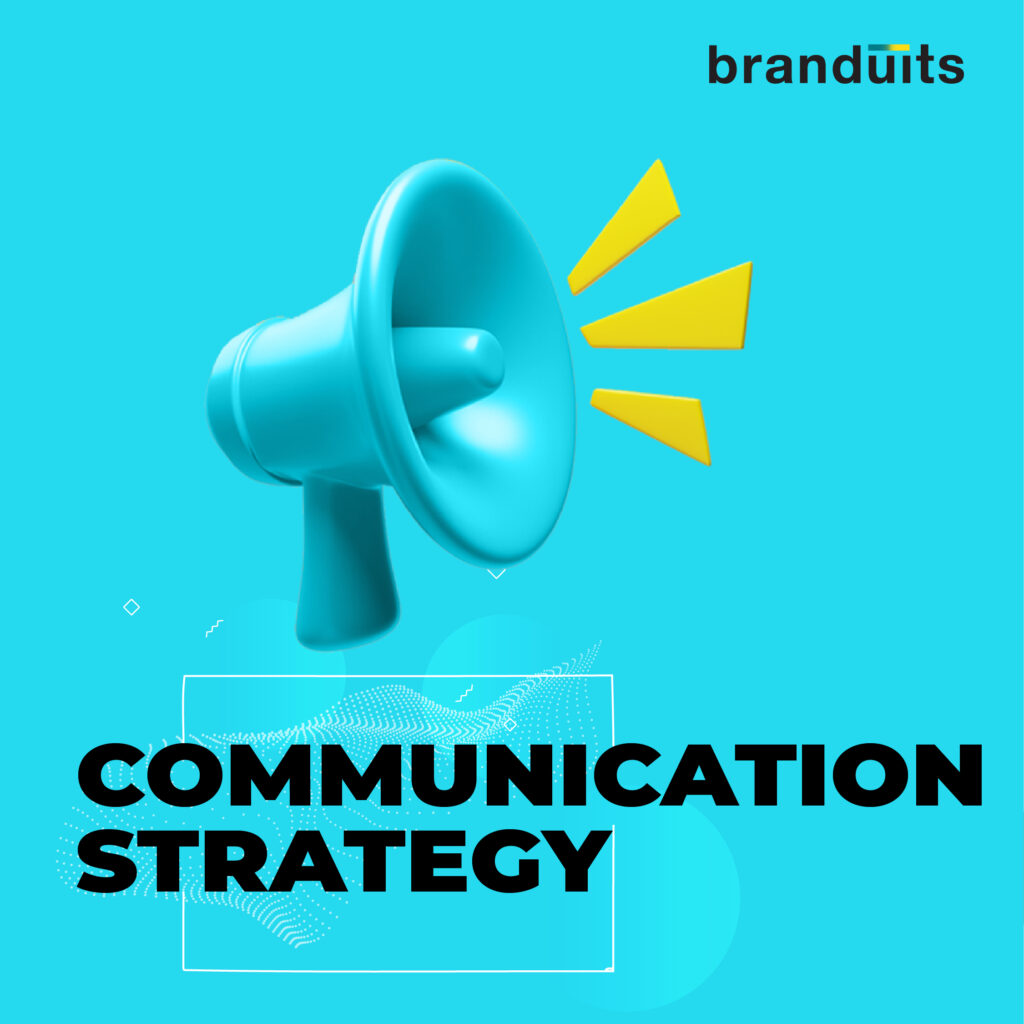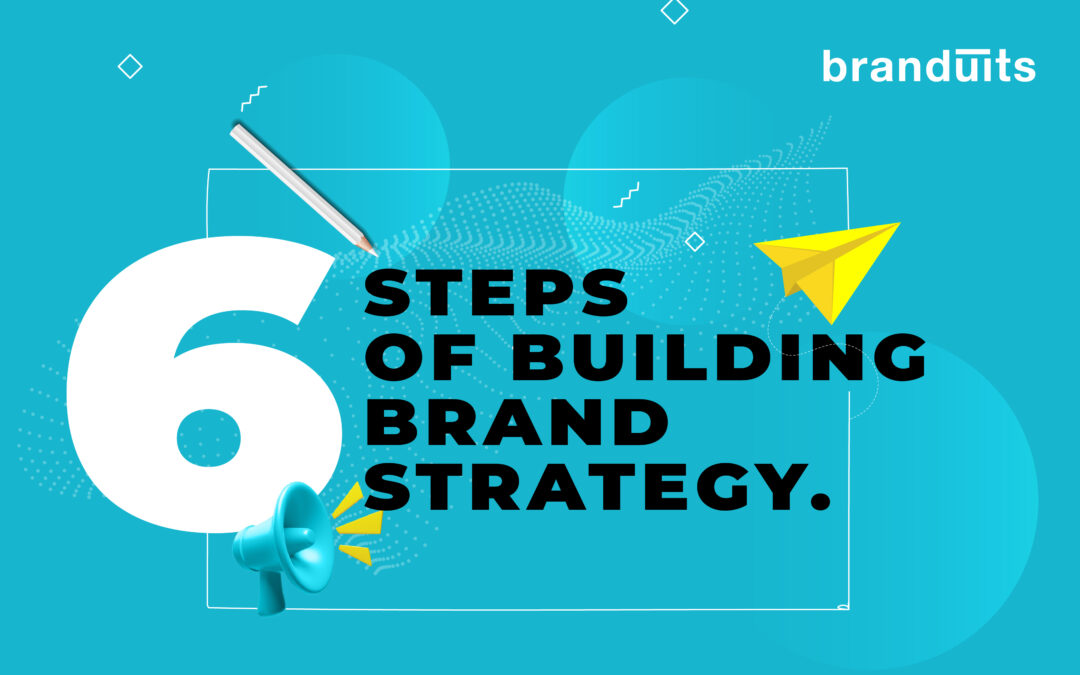Building a brand is like building a house at first & then manoeuvring to initiate the home-making process. It begins from adjusting the space that your house shall allocate for its existence & constructing a game plan for ascribed work.
Once the structure is developed, spreads are organised, identity is defined, post which we start with building strategies to make the same house a home. Building a home is an emotional & a subjective process, the more you indulge with care & maintenance, the better is the extent of your home.
Just like a house-building process- where we first devise a strategy before we translate the objective into a subjective spread of a home. Similarly, for a brand we first allocate a Brand Strategy.
Let us first understand the basics of what exactly is a Brand Strategy?
Brand Strategy more or less, “is a step-by-step process of achieving a Brand’s long-term goal that will result in the exposure of a brand among its consumers”.
Thus, you see brand strategy is a very imperative step in building a brand and adequate time & brainstorming sessions should be issued for the same.
Here in this article, we will be discussing in depth the 6 levels of brand strategy.
6 Levels of Brand Strategy
A brand strategy is not just about its logo, colour palette, website & the likes but other more important elements. Let us render this idea in depth by first differentiating between a common mistake of levelling Brand & Product Strategy as same!
Design Strategy

Design strategy in layman terms is a carefully devised meeting point of its valuable consumers and profitable business. It is a showcase of how your consumers will remember you which further helps in inculcating long-term loyalty base from the consumers. Therefore, your design strategy must be economical, aspirational, and scalable.
Now, like we mentioned above- when building a design strategy we commence with expanding upon the brand architecture through identity, and culture. So, let us now quickly dive into learning about these three important steps.
Brand Architecture
Brand Architecture in short is an organised structure of a brand and its sub-brands. With an expansive & immersive brand architecture we can help consumers form relationships with our brand and sub-brands for reliability, relatability & loyalty grants.
For example, the giant Google if you notice has a great brand architecture. Google always prefixes ‘G’ before its extensions – Gmail, Google Drive, Google Maps, etc. This is a great way to embed remembrance in the psychology of the consumers.
The brand architecture consists of three main components:
- Master Brand – We call it the parent brand. It is usually the parent company name.
- Sub-Brand – A sub-brand is a product or a service of the company but has a slightly different brand name.
- Brand-Extension – The brand extension refers to the new products or services of a company with allocation of the Master brand terminology as its prefix.
Brand Identity
Brand Identity is the wide-viewed story of the company from their own standing. Basically, Brand Identity is how a brand portrays itself to the consumers.
In general, a brand identity is created using a brand name, tagline, positioning, personality, association, and other common carousel branding checklists.
Developing a robust brand identity helps the brand to develop its unique stance which highlights the uniqueness of the brand & differentiates it from its competitors.
Brand Identity also primarily helps in developing the brand image (the perception of the brand from the customer’s point of view).
Brand Culture
The brand culture is a unique idea, attitude, and belief of a brand that its team members follow and adapt to. It is a portrayal of the kind of way-of-being a brand inspires. This in turn becomes the representation of the brand for its consumers.
Just like the DNA of a person is unique, similarly, the culture of a brand should also be unique and relatable. Developing a brand culture is a very important step in building a Brand Strategy because a strong brand culture helps companies generate high margins, customers, and future leadership models for the company.
Digital Strategy

To understand the magnification of Digital Strategy we need to first comprehensively understand Media Strategy. A media strategy is a plan of action that helps a brand reach its target audience and increase the conversion rate through different types of media channels, be it digital, broadcast or print.
How to create a perfect Media Strategy?
To create a perfect media strategy you need to:
- Set clear goals
- Know about your target audience
- Create a meaningful message
- Set a budget
Types of Media Strategy
Print Media: Print media includes ads on newspapers, magazines, brand posters, charts, calendars, etc.- anything that is tangible & developed for the cause of the brand.
Broadcast Media: Here we try to get brand mentions & ads in news stories, TV channels, shows, radio, and events.
Digital Media: In today’s world, everything has become digital. Digital brand strategy & marketing is an imperative step towards governing a successful brand presence and recognition. As per Smart Insights, more than half of the world (around 58.4% of people) are using social media right now as we speak! Therefore, if a brand has to ace in Media strategy social media strategies & web development schema are non-negotiable. Regular social media updates, website development, newsletters, email campaigns, etc. assure visibility in today’s screen strategy.
Market Strategy

The marketing strategy of a brand in simple terms is a comprehensive plan of a brand to achieve its marketing objectives. It is an overall game plan to reach our target customers so that we can sell our products and services to them.
We can and should design the marketing strategy of a brand after in-depth marketing research. This entails that we must be up-to-date with our competitors, market volume, and capacity. We must understand why and how we are unique and what exactly is the core of our marketing standards.
How to Design a Marketing Strategy?
An ideal way of designing a marketing strategy is step-by-step, namely,
- Segmentation of the consumers
- Targeting of the consumers
- Positioning of the brand
Segmentation: In segmentation, we organise our brand along the demographic, geographic, and the behavioural lines of our consumers. We slice our brand’s audience into smaller groups to reach our target customers.
Targeting: In targeting, we focus on the needs and desires of our consumers that closely matches our product and services.
Positioning: In positioning, we determine how we position our brand to the right audience in the market. Heavy losses on identity & at the consumer front are incurred if we fail to position our brand right.
For example,
Did you know that, in 1982, Colgate tried to enter the frozen food market? Their ideation was that food and dental hygiene have a core connection and consumers of the frozen food market adequately fall inside their circle. But this was a miscalculation clearly and soon they saw a steep decline in their profits because of this endeavour which resulted in them dropping the idea altogether.
It is of utmost importance that the positioning of a brand is always clear, absolute & well-researched.
Now that we understand segmentation, targeting and positioning of our brand in lieu with its defined consumer base, we indulge in defining & developing a brand architecture.
Brand identity and inculcation of a brand culture that falls inside the next larger step of Brand Strategy, i.e. the Design Strategy.
Communication Strategy

Once we have a brand ideation at hand, we need to translate our brand spread into fruitful conversions. This is what we mean by Brand Communication- how your consumers & the market in general sees you and knows of you is what communication entails.
Nowadays, it is heads up easy for brands to communicate with their customers through social media, messages, calls, emails and a plethora of other mediums.
A brand communication strategy primarily consists of three things:
- Message: What needs to be said.
- Medium: The channels through which the message will be conveyed.
- Market: Where we convey our message & to whom
Campaign Strategy
A campaign strategy is one of the primary methods to instil communication about your brand, for your consumers. It is usually a set of activities (both digital & on-ground), in which brands use the right tools and tactics to craft their presence, culture, highlights and timeline for consumption. Campaigns often enhance the relatability & identity of the brand and are a crucial step in today’s world.
A campaign strategy must be highly organised and extremely purposeful so that it generates traction and holds authority on any change it inculcates in the market. In a campaign strategy, a brand has to find a theme which could be an issue, an existing trend, an important drift, etc, which furthers into solving, initiating, and hyping upon the campaign standards.
A successful brand campaign identifies the target consumer base [who is going to be affected by the campaign, positively as well as negatively?] and has enough gimmicks and tactics to survive any mishap.
Environment Strategy

In today’s world it is imperative that you develop your business model in accordance with the sustainability norms that are going to be mandatory in the coming future. ESG laws and protocols are now raging in company policies in all major investing firms. If you want an uncurbed growth strategy for your company, a sustainable approach should be your go-to model.
‘E’ in the ESG entails the environment segment in the ESG model & is one of the leading markers of a profitable business today. The consumers (mostly Gen Z!) are becoming extremely conscious about the choices they make and are preferring brands & products that are ‘green’ & environment friendly.
Learn, Strategise & Execute Sustainability
In addition to the profit based futuristic approach, we also need to understand our responsibility towards nature & our environment. An environment friendly business model is the next big thing & there are various ways to start thinking in this direction. You can always start with learning more about this segment & how to incorporate it in your brand strategy both for internal workforce and for external showcases. Develop a fruitful insight based strategy & find efficient mechanisms to execute them.
People Strategy

A brand is designed for ‘people’, by ‘people’ & is about ‘people’. With the initial brand research for strategy development, we understand the market for which our product is curated and developed. Every brand understands this and chalks out the exact consumer for their product.
In addition to that, we must understand our social responsibility too. The workforce that enables a brand, the partners & various hierarchies of collaborators are ‘people’ of the brand & they demand equal levels of considerations, healthy 7 a fair workspace. A brand should be able to ensure that through to set a tone of happy engagement & healthy growth of the brand. A brand strategy should inculcate the value of investing or collaborating with various institutions and organisations that work with communities & are about bettering life & standards of ‘people’
Now you know the basics of 6 levels of Brand Strategy which if aced and are properly devised leads to a creation of a flagship brand. So what are you waiting for? Create a holistic & futuristic brand today, follow this space for regular branding updates & quirky info!


Recent Comments